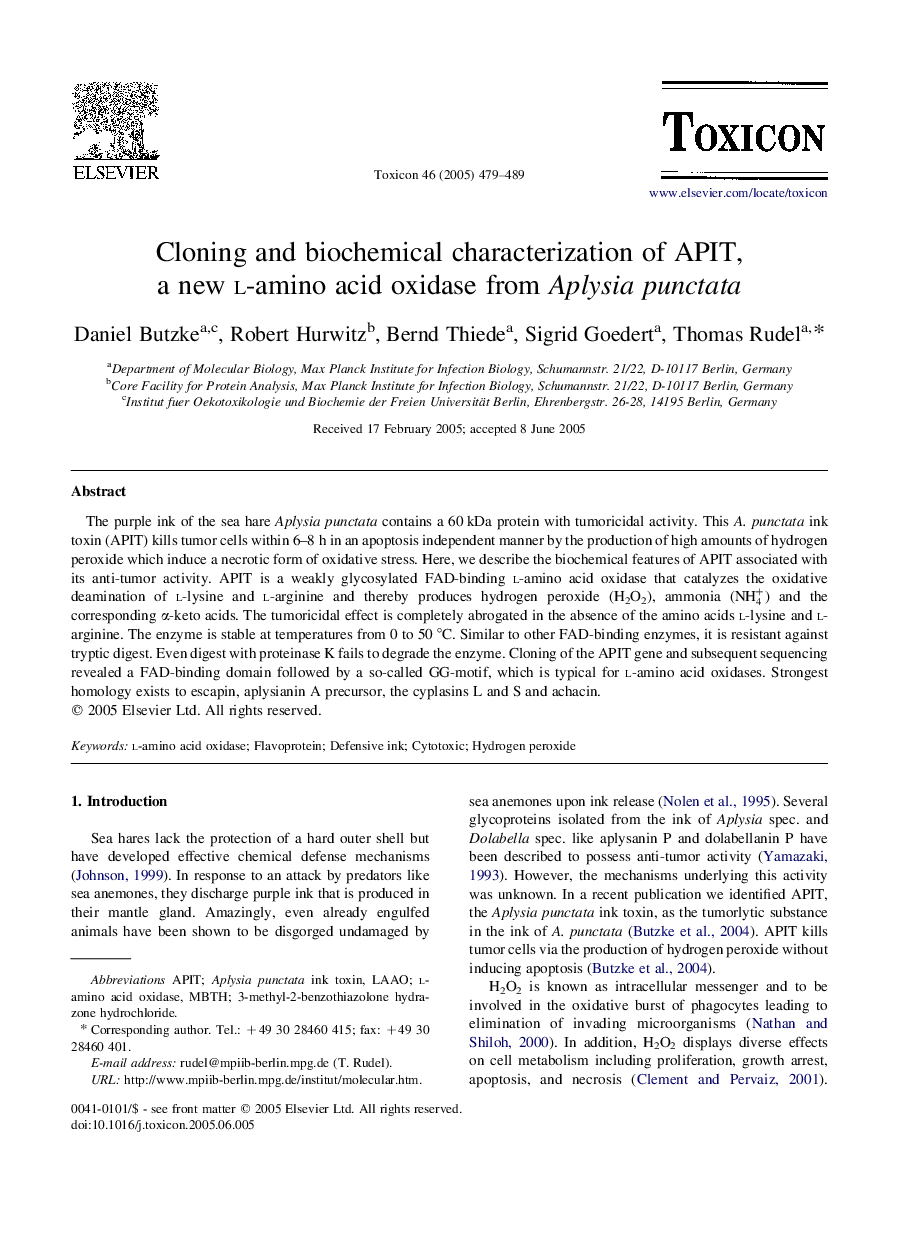| Article ID | Journal | Published Year | Pages | File Type |
|---|---|---|---|---|
| 10880233 | Toxicon | 2005 | 11 Pages |
Abstract
The purple ink of the sea hare Aplysia punctata contains a 60 kDa protein with tumoricidal activity. This A. punctata ink toxin (APIT) kills tumor cells within 6-8 h in an apoptosis independent manner by the production of high amounts of hydrogen peroxide which induce a necrotic form of oxidative stress. Here, we describe the biochemical features of APIT associated with its anti-tumor activity. APIT is a weakly glycosylated FAD-binding l-amino acid oxidase that catalyzes the oxidative deamination of l-lysine and l-arginine and thereby produces hydrogen peroxide (H2O2), ammonia (NH4+) and the corresponding α-keto acids. The tumoricidal effect is completely abrogated in the absence of the amino acids l-lysine and l-arginine. The enzyme is stable at temperatures from 0 to 50 °C. Similar to other FAD-binding enzymes, it is resistant against tryptic digest. Even digest with proteinase K fails to degrade the enzyme. Cloning of the APIT gene and subsequent sequencing revealed a FAD-binding domain followed by a so-called GG-motif, which is typical for l-amino acid oxidases. Strongest homology exists to escapin, aplysianin A precursor, the cyplasins L and S and achacin.
Related Topics
Life Sciences
Biochemistry, Genetics and Molecular Biology
Biochemistry, Genetics and Molecular Biology (General)
Authors
Daniel Butzke, Robert Hurwitz, Bernd Thiede, Sigrid Goedert, Thomas Rudel,
